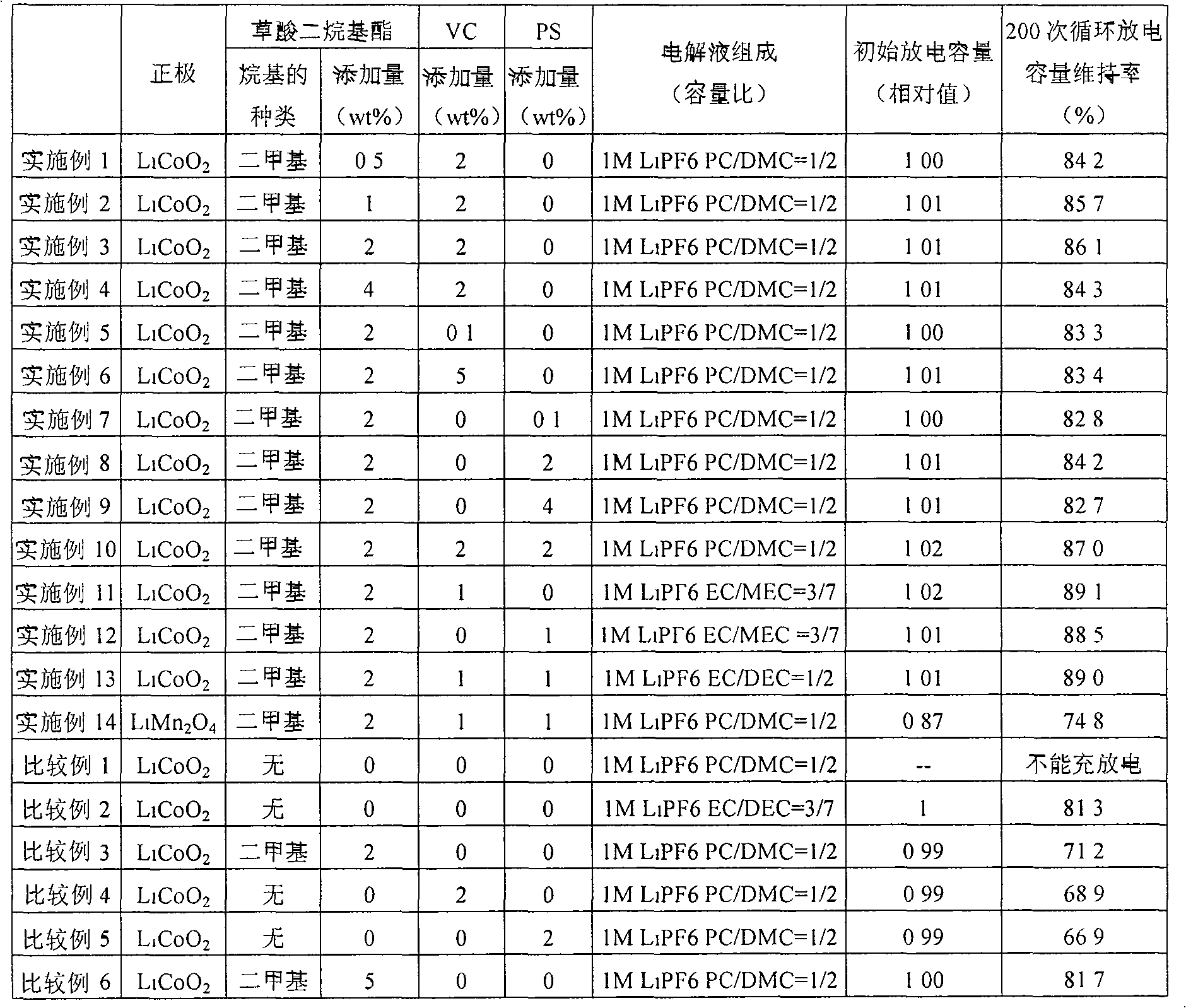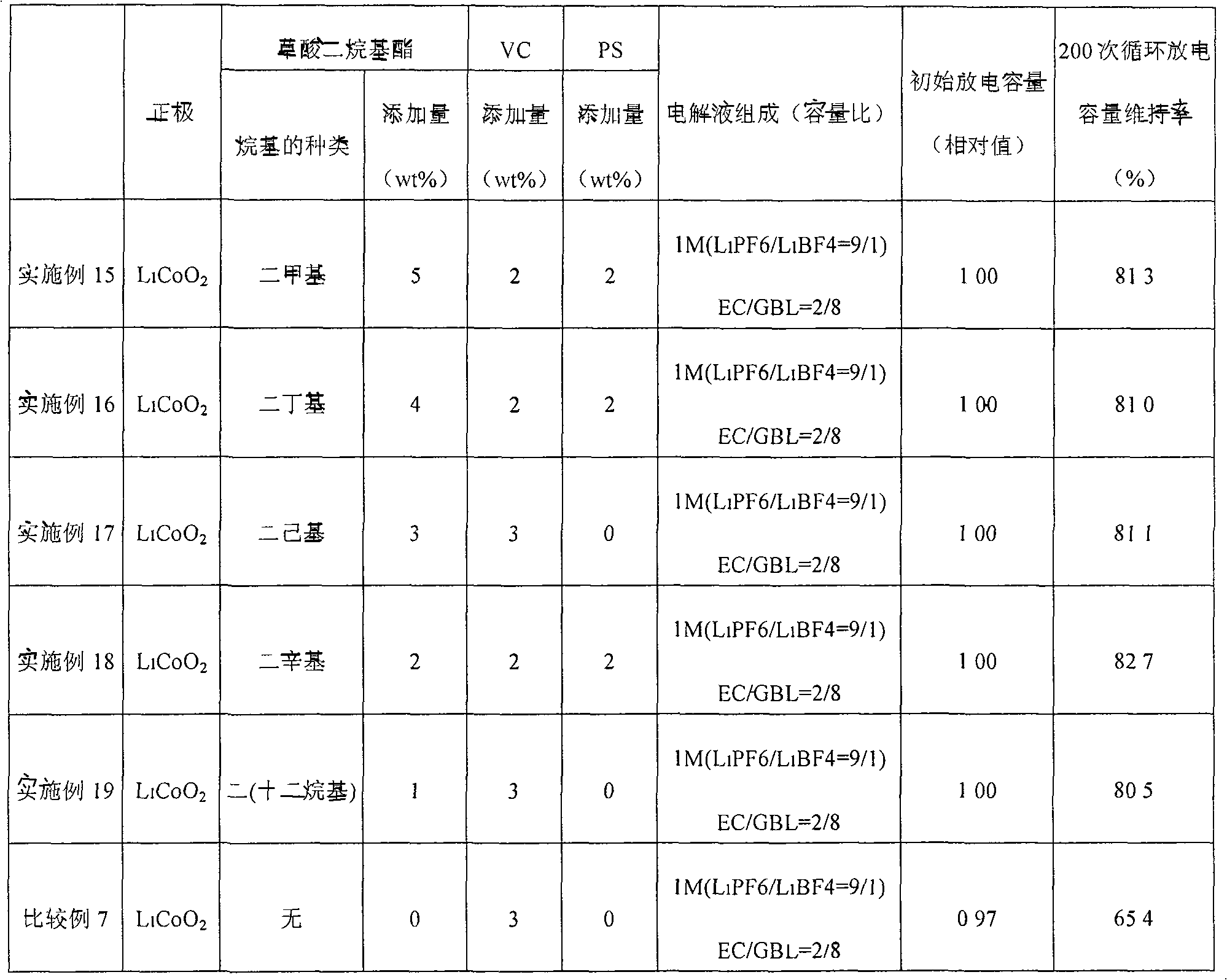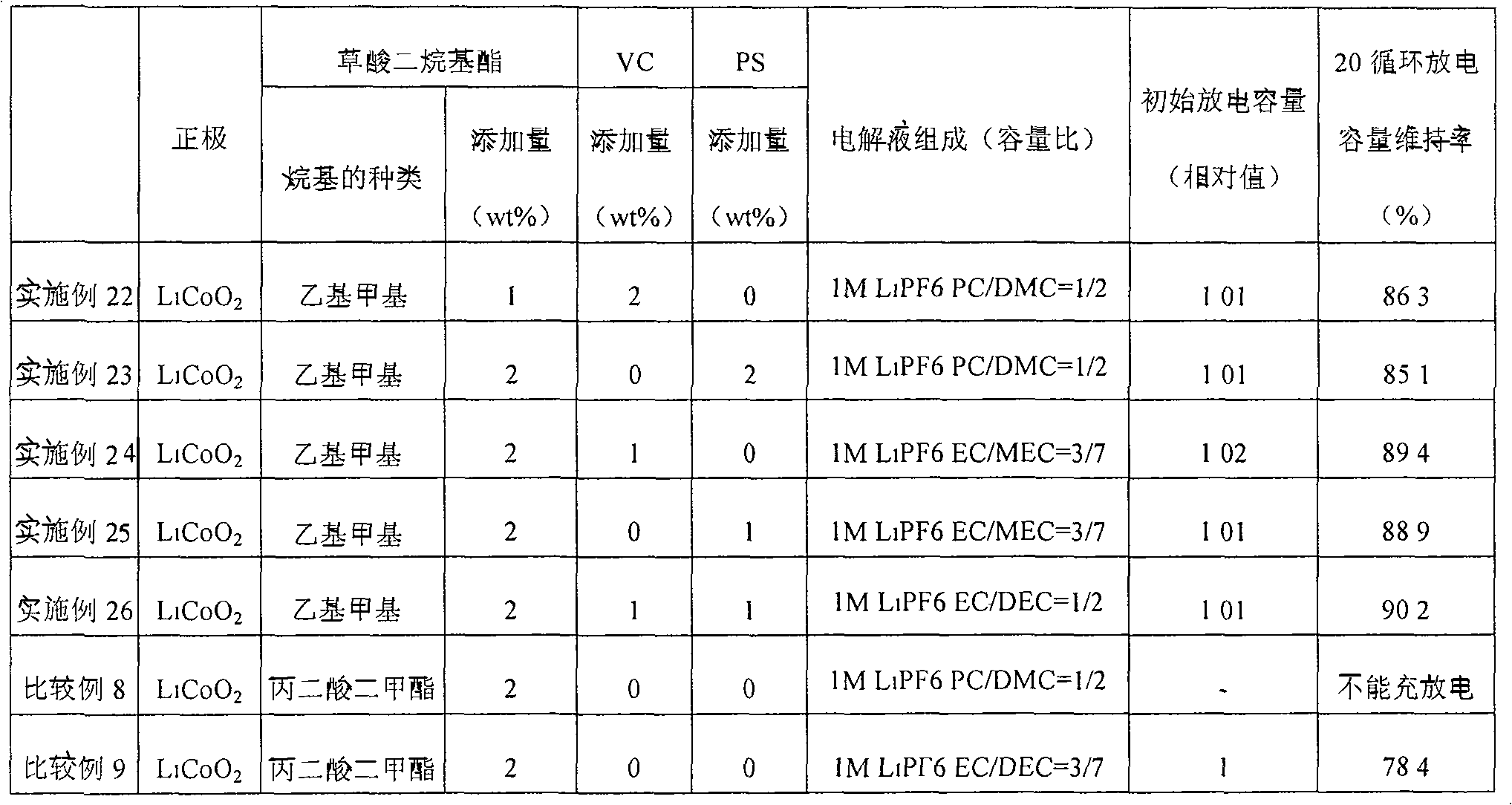Lithium secondary cell and its nonaqueous electrolyte
A lithium secondary battery and non-aqueous electrolyte technology, which is applied in secondary batteries, non-aqueous electrolyte batteries, battery electrodes, etc., can solve the problems of unprocessed cycle characteristics, etc.
- Summary
- Abstract
- Description
- Claims
- Application Information
AI Technical Summary
Problems solved by technology
Method used
Image
Examples
Embodiment 1
[0062] [Preparation of non-aqueous electrolyte]
[0063] Prepare a non-aqueous solvent of propylene carbonate (PC): dimethyl carbonate (DMC) (capacity ratio) = 1:2, and dissolve LiPF as an electrolyte salt in it 6 , and make it reach the concentration of 1M, so as to prepare the non-aqueous electrolytic solution, then add dimethyl oxalate and make it reach 0.5% by weight, add vinylene carbonate (VC) and make it reach the non-aqueous electrolytic solution 2% by weight.
[0064] [Production of Lithium Secondary Battery and Measurement of Battery Characteristics]
[0065] LiCoO 2 (positive electrode active material), acetylene black (conductive agent), and polyvinylidene fluoride (binder) are mixed in proportions of 90% by weight, 5% by weight, and 5% by weight, respectively, and 1-methyl-2 -Pyrrolidone solvent and mixed, and the obtained mixture was coated on an aluminum foil, dried, press-molded, and heat-treated to prepare a positive electrode. Will have a crystal plane (0...
Embodiment 2
[0068] As an additive, with respect to the non-aqueous electrolytic solution, 1% by weight of dimethyl oxalate and 2% by weight of vinylene carbonate were used, except that the non-aqueous electrolytic solution was prepared in the same manner as in Example 1, and a 18650 battery was produced and measured. The characteristics of the battery after 200 cycles were checked, and the discharge capacity retention rate was 85.7%. Table 1 shows the fabrication conditions and battery characteristics of the 18650 battery.
Embodiment 3
[0070] As an additive, with respect to the non-aqueous electrolytic solution, 2 weight % of dimethyl oxalate and 2 weight % of vinylene carbonate were used, except that the non-aqueous electrolytic solution was prepared in the same manner as in Example 1, and a 18650 battery was produced and measured. The characteristics of the battery after 200 cycles were examined, and the discharge capacity retention rate was 86.1%. Table 1 shows the fabrication conditions and battery characteristics of the 18650 battery.
PUM
| Property | Measurement | Unit |
|---|---|---|
| face spacing | aaaaa | aaaaa |
| density | aaaaa | aaaaa |
| density | aaaaa | aaaaa |
Abstract
Description
Claims
Application Information
 Login to View More
Login to View More - R&D
- Intellectual Property
- Life Sciences
- Materials
- Tech Scout
- Unparalleled Data Quality
- Higher Quality Content
- 60% Fewer Hallucinations
Browse by: Latest US Patents, China's latest patents, Technical Efficacy Thesaurus, Application Domain, Technology Topic, Popular Technical Reports.
© 2025 PatSnap. All rights reserved.Legal|Privacy policy|Modern Slavery Act Transparency Statement|Sitemap|About US| Contact US: help@patsnap.com



